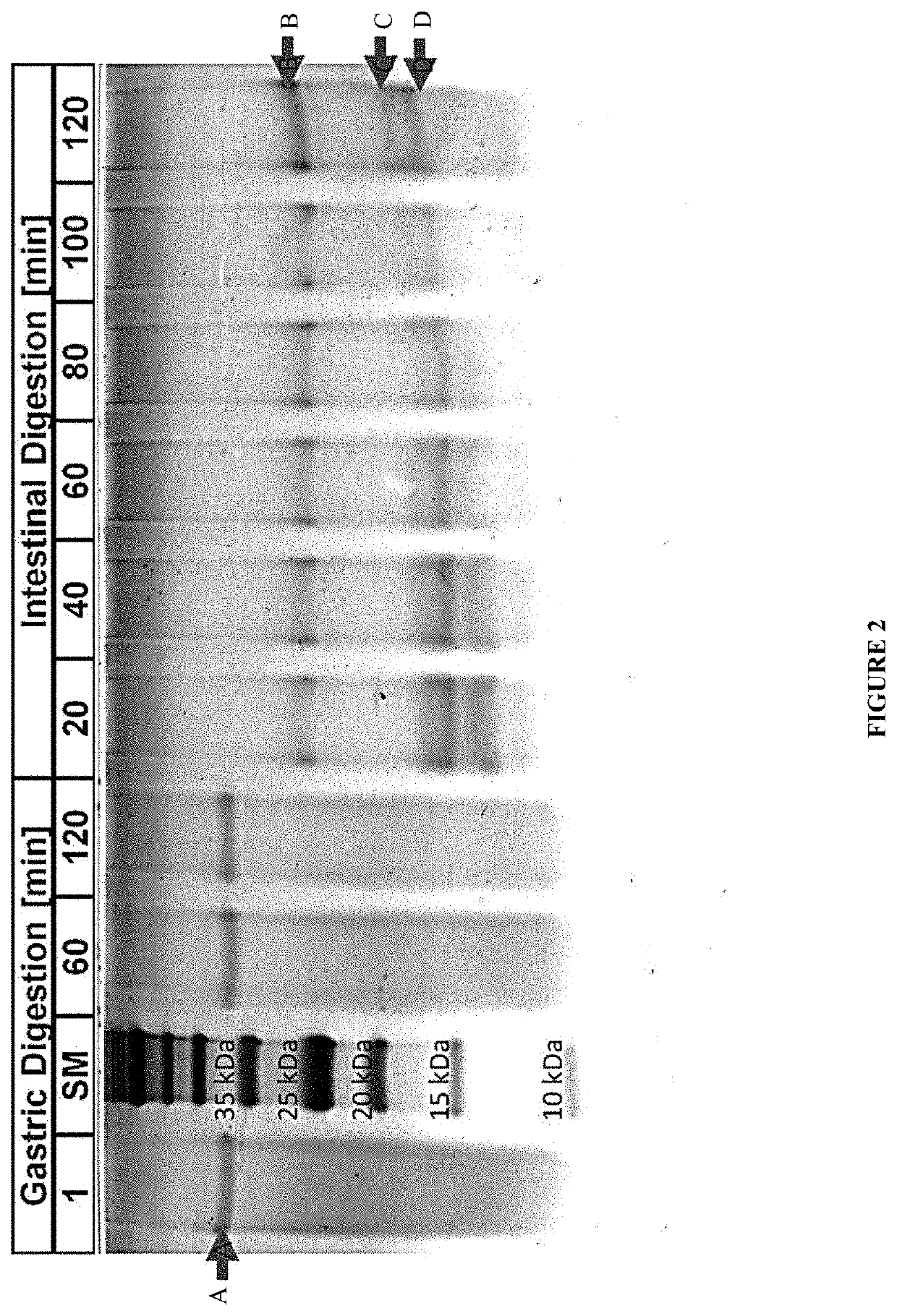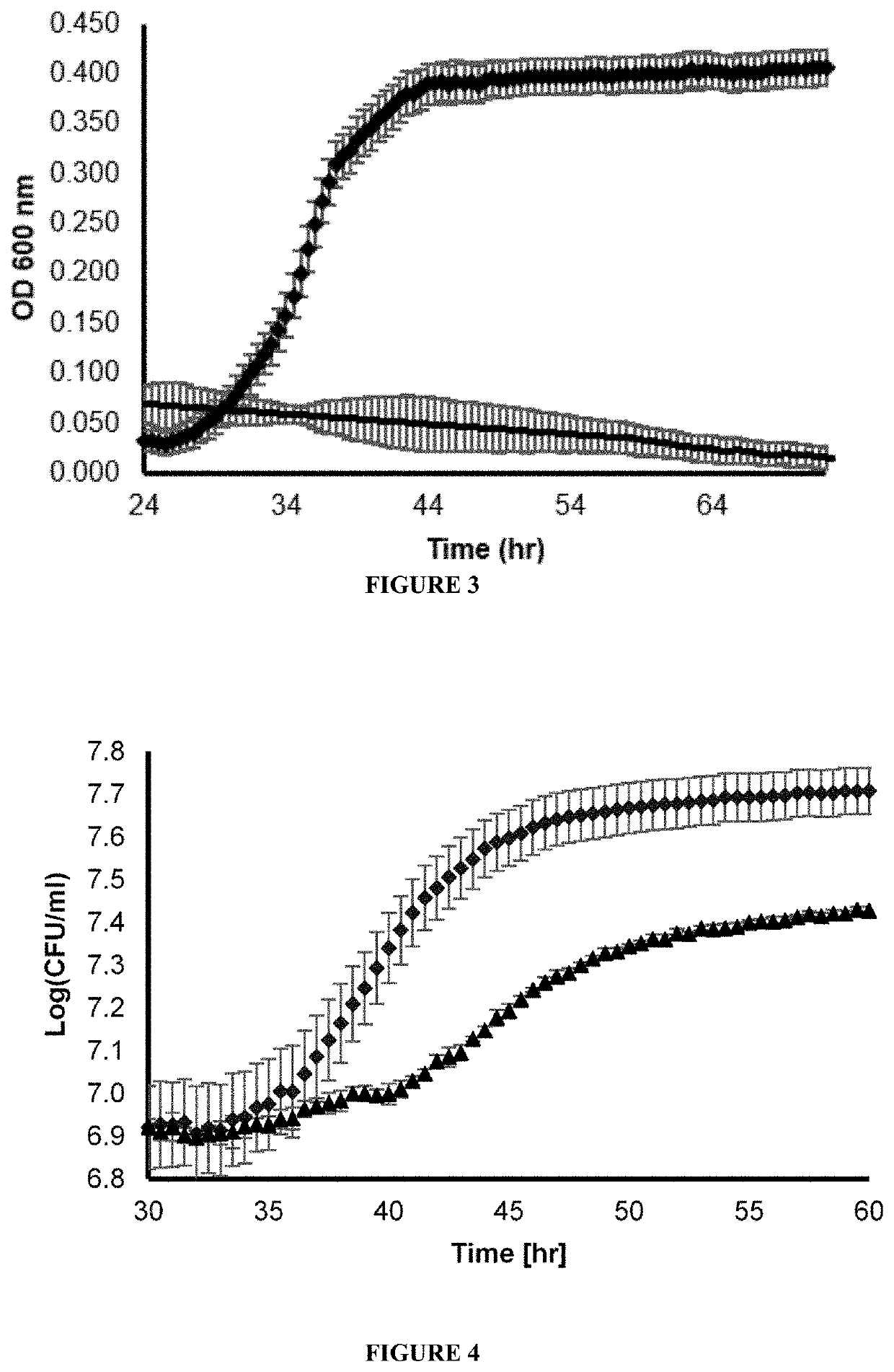Composition and method for a prebiotic delivery system targeted to probiotic bacteria
a technology of probiotic bacteria and prebiotics, applied in the field of prebiotics, can solve the problems of insufficient study of probiotic species, specific strain-therapeutic application, insufficient dosage, etc., and achieve the effects of increasing the cost of ingesting probiotics, reducing and increasing the number of bacteria in the system
- Summary
- Abstract
- Description
- Claims
- Application Information
AI Technical Summary
Benefits of technology
Problems solved by technology
Method used
Image
Examples
example 1
and Characteristics of an LFH-GOS Conjugate
[0130]As a non-limiting example, galacto-oligosaccharides (GOS) were selected as the model indigestible prebiotic carbohydrate, and lactoferrin was selected as the model protein. GOS are prebiotic carbohydrates synthesized from lactose, and are most commonly used in infant formulas. They are resistant to degradation in the human gastro-intestinal tract by human digestive enzymes, but are metabolized by probiotic colon bacteria to lactate, short chain fatty acids (SCFAs), CO2 and H2. In a large number of human studies with consistent results, consumption of GOS led to selective stimulation of the health-beneficial bifidobacteria and lactobacilli- and supplementation of infant formula with GOS led to fecal abundance of those probiotics comparable to that of breast-fed infants (as human milk naturally contains large amounts of prebiotic oligosaccharides). In some in vitro studies, it was concluded that consumption of GOS may contribute to bloc...
example 2
Simulated Digestion Experiments
[0136]An in vitro simulated digestion experiment analyzed by SDS-PAGE (FIG. 2) showed that a significant portion of the protein in the Maillard conjugates survived both gastric and intestinal digestion, and is therefore expected to reach the colon in in vivo experiments as well, and be used by the colonic probiotic bacteria.
[0137]A solution of lactoferrin was hydrolyzed by pepsin at pH 2. A solution of galacto-oligosaccharides (GOS) was added to the lactoferrin hydrolysate (LFH) solution and the pH was raised to 10. The solution was heated, while stirring, for 50 minutes at 70° C. and to stop the Maillard reaction, the pH was lowered to 7 and the solution cooled down. The in vitro simulated digestion experiment was performed according to an international-consensus protocol with 2 hours of gastric digestion followed by 2 hours of small intestinal digestion. Materials surviving the entire intestinal phase are assumed to be capable of arriving at the colo...
example 4
nked Carbohydrate Particle
[0145]Variations of the Maillard conjugates which have the potential to selectively benefit the probiotic bacteria in the colon in-vivo, and be economically attractive, are prepared. Conjugates of lactoferrin digested by pepsin (LFP) and galactooligosaccharides (GOS) with an average degree of polymerization (DP)-5 have been already developed. The conjugation of LFP to different indigestible prebiotic carbohydrates: FOS (DP-10) and inulin (DP-23) is assessed. In order to increase vehicle robustness, cross-linking of the carbohydrate fraction using sodium trimetaphosphate (STMP), an inexpensive food-grade cross-linker used in the starch industry, is examined. Crosslinking should protect the protein from protease accessibility, so that predigestion would not be necessary.
PUM
| Property | Measurement | Unit |
|---|---|---|
| Fraction | aaaaa | aaaaa |
| Percent by mass | aaaaa | aaaaa |
| Size | aaaaa | aaaaa |
Abstract
Description
Claims
Application Information
 Login to View More
Login to View More - R&D Engineer
- R&D Manager
- IP Professional
- Industry Leading Data Capabilities
- Powerful AI technology
- Patent DNA Extraction
Browse by: Latest US Patents, China's latest patents, Technical Efficacy Thesaurus, Application Domain, Technology Topic, Popular Technical Reports.
© 2024 PatSnap. All rights reserved.Legal|Privacy policy|Modern Slavery Act Transparency Statement|Sitemap|About US| Contact US: help@patsnap.com










